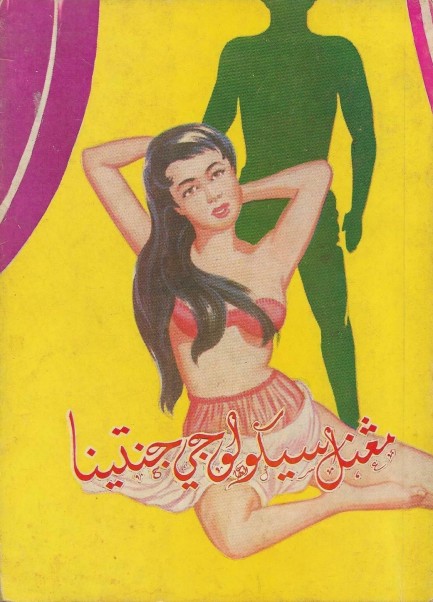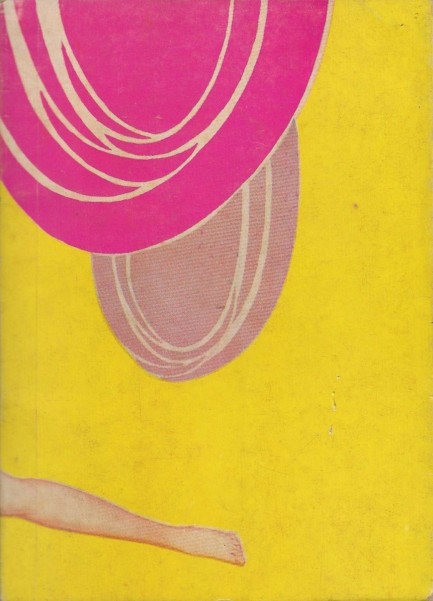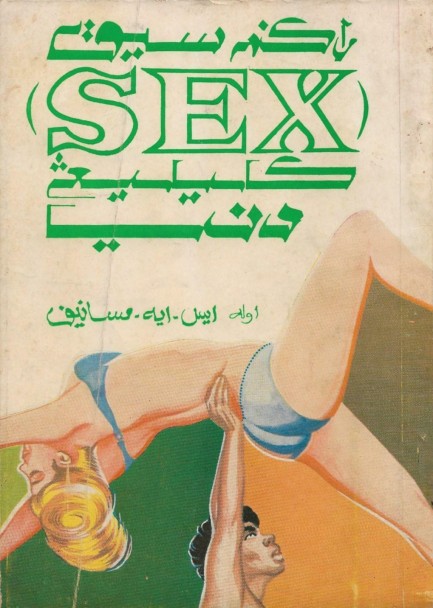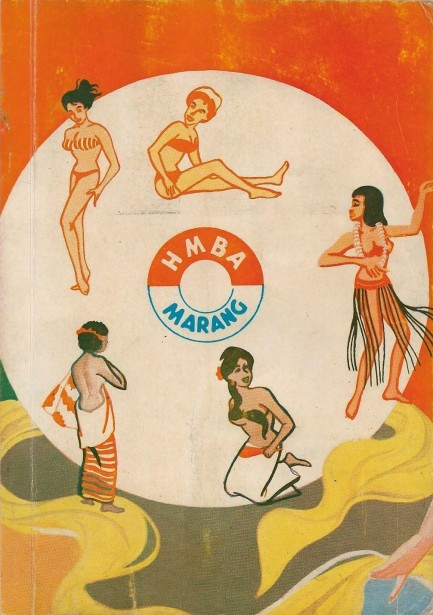 He's hopelessly outclassed by his prey. And the tiger is a problem too. 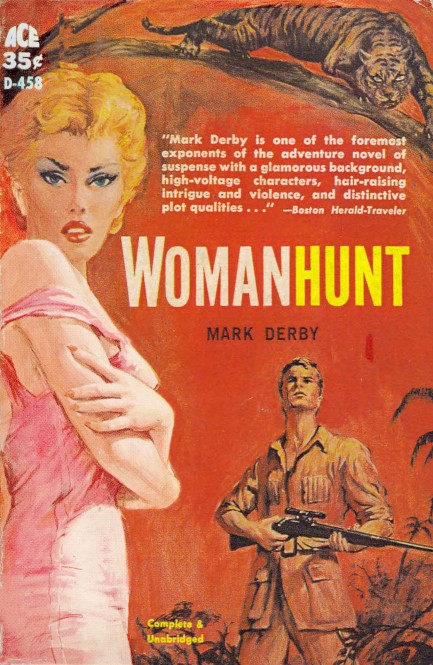
Above you see a nice cover by an uncredited illustrator for 1959's Womanhunt, written by Harry Wilcox posing as his alter ego Mark Derby and published in this Ace paperback edition in 1960. This is interesting visual work. You notice that the femme fatale's eyes resemble the tiger's eyes. That comparison is at the crux of the tale Derby tells. In the story a government agent named Dickson (Dix to his friends) is sent upcountry in Malaya to pose as a big game hunter there to kill a deadly tigress, while behind the scenes he's searching out a communist cabal and determining whether an agent already there is doing her job or has turned.
That agent—Anna Swansey—is someone Dix barely knows but is “miserably and hopelessly in love with.” Under the pressure of his mission, his feelings turn into a consuming obsession. As high concept novels go, the idea of trying to stalk an apex predator, arouse love within a woman, and expose a spy ring all at once is as ripe as it gets. There's a lot going on at all times, and Derby keeps multiple plates spinning on sticks while treating readers to some nice passages, like this one:
Before her magnificent body, an electric apparition of charcoal, gold, and white, had passed out of sight, he had a second view of her snarl, the haughty sneer that drew mouth and white whiskers high and quivering on each side, the narrowing of the usually rounded eyes, the flash of the ivory teeth.
At one point Dix is alone in the jungle and hears the tigress's roar. It's a moment when he realizes, terrifyingly, that his hunt of her may have turned into her hunt of him:
He jumped as if a cannon had gone off. He had got it into his head that she was somewhere over on his right, or behind him, and this growl came from directly ahead. It sounded awesomely near, too. [snip] The roar, a sound which perhaps only one in every million human beings ever hears, and only one in ten million ever hears at close quarters, filled the dark jungle with shock. There was a moment, perhaps of one second, during which Dix did nothing but stiffen; then his arms moved and the beam of the flashlight mounted on the rifle barrel cut a cone of light in the dark clearing.
The title of book registers weird in 2024, but it isn't misogynist—or not very. A few web pages say the woman of the hunt is, metaphorically, the tigress. No. It's a metaphor, alright, but not one that simple. The woman of the hunt is actually both the tigress and Anna. That's made clear because Derby flogs the woman-as-tigress metaphor until it's welted from nose to tail. But he's also capable of smirking at it, briefly anyway, such as here:
“My grandfather used to say that a tigress was a woman, a woman who did not wish to be caught. She would hide down trails the hunter didn’t know and, just like a woman, her lies would be more clever than his traps. That’s what he used to say.” ’Che Kadan was fond of quoting his grandfather, who’d been one of the Malayan sultans—an old man of character, it seemed, since his quoted remarks were invariably mere clichés or sentimental platitudes which must have been remembered for the authority with which he’d uttered them.
It's a comparison that's probably insulting to most modern women, but don't let it fool you. The tale is steeped in debilitating male emotion, lustful obsession, existential terror, and a desperate loneliness. It reads tragically at times, as Dix tries but fails to keep Anna from slowly taking over his thoughts. And that's another unusual aspect of the book: Dix is increasingly driven by jealousy. At first it's directed only against Anna's boss Charlton Lang, who also wants her badly and uses his authority to constantly keep her near him in a work capacity. Then Anna's ex-lover shows up. Dix is driven near to madness by this event.
Derby deals in high emotion. For example, big cats generally kill humans when they're the only obtainable prey. Usually the animal is hurt, or very old. Dix sympathizes with the tigress, doesn't consider her to be in any way at fault, but people keep getting eaten, so he has no choice about killing her—not merely as matter of his cover, but as a matter of saving lives. His conflict over this is wrenching, symbolic of terrible choices forced on us all. To add an extra ingredient, he isn't an experienced hunter. He can shoot—but he isn't expert. His pursuit of the tigress is ridiculously dangerous.
This is a great book. However, the usual warnings apply to colonial fiction. In addition, within the communist plotlines Dix's quarries are all fools, monsters, or victims of coercion. Capitalism wasn't then—and isn't now—turning the world into a fruit laden banquet table overflowing with goodness for all, and Derby was surely smart enough to understand that. But despite the billions killed to establish and maintain his preferred global order, he never touches the reasons why alternative political philosophies take hold. In his mind, resistance comes from the deluded, from dolts who—for inexplicable reasons—believe colonials have no right to steal foreign lands. That may annoy the more politically objective readers.
But while more character depth on that front would have made Womanhunt perfect, and its total and rather smug one-sidedness means it has to be partly classified as propaganda, Derby can really construct and deliver an adventure. How do you wrap up a communist spy caper, Malayan big game hunt, and heart-hurting love story all at once? Those spinning plates never wobble. The hunt's spectacular end flows immediately into the climax of the spy tale, and within that chaotic resolution the love story concludes with fireworks. We'll be revisiting Derby soon. 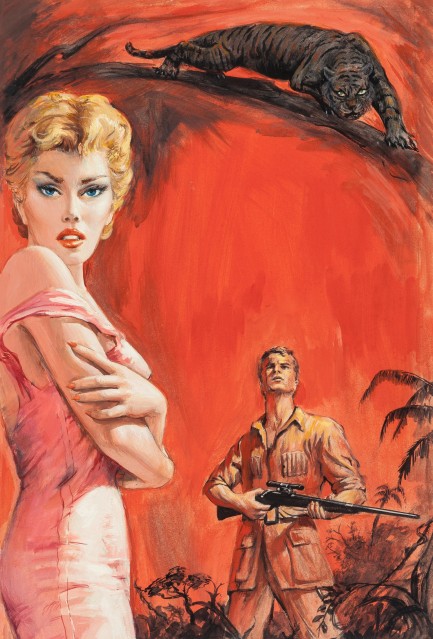
 Chaos thy name is woman. 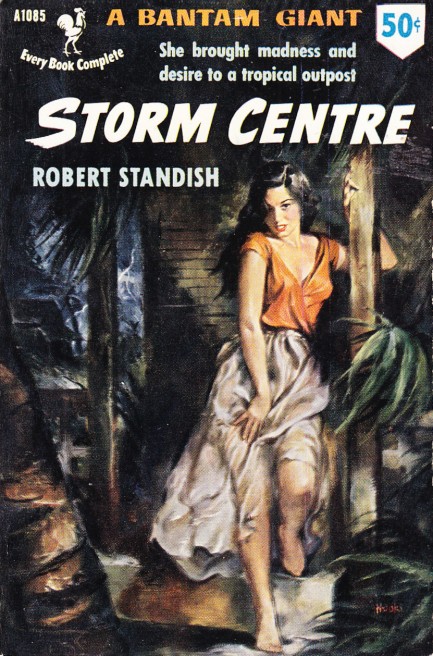
Above you see a Mitchell Hooks cover for the 1951 Robert Standish novel Storm Centre, and yes, from the art alone you can see that once again we've taken the plunge into tropical island fiction. It's impossible for us to resist the stuff. This one is about what happens when a devastatingly beautiful woman named Diana Maynard shows up at an isolated British plantation community in Malaysia. Everyone immediately covets her, particularly John and Adrian, friends and business partners who turn against each other. Even the local orangutan Jimmie is driven to distraction, theoretically because he senses something “primal” in Diana.
The consequences of all this lust are serious. An eye is lost. A skull is fractured. A face disfigured. A suicide completed. It's an interesting story in that there are no villains at first, but rather good people acting increasingly out of character due to obsession. Diana, the titular “storm centre”, is up front from the beginning about not wanting any of the men. Well, until a charming rogue of a Frenchman turns her head. Storm Centre is a surprisingly forward-looking tale by Standish about male toxicity and aggressive attitudes toward beauty. Because he's writing about women to depths that seem a bit beyond him, the story may not ring entirely true for some. But it certainly rings.
 That bimbo has no idea she can't get hair dye here. When her roots grow out we'll see if men still think she's so amazing. 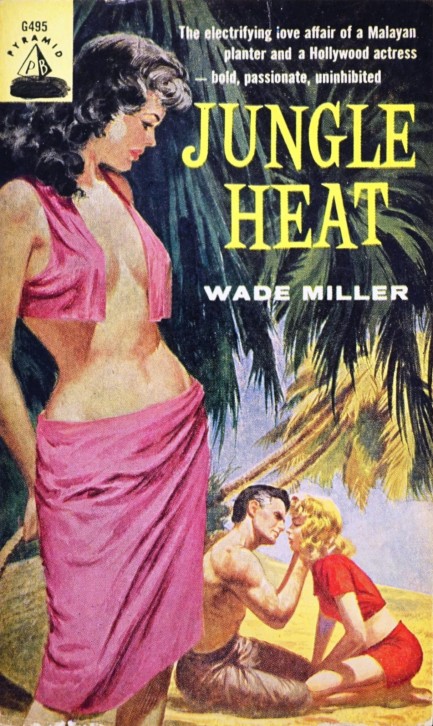
We have other Wade Miller books to read, but we picked up this copy of 1960's Jungle Heat and moved it to the head of the line because the story is set in Malaya (now Malaysia), and the last book we read that the authors (Bob Wade and Bill Miller writing together under a pseudonym) set in an exotic country was phenomenal. Jungle Heat was originally published in 1954 under the name Dale Wilmer, with this reattributed Pyramid edition coming a bit later, and it finds Miller taking on the unexpected challenge of writing in first person from a woman's point-of-view. The lead character is Hollywood b-actress Roxy Powell, who is sent to Malaya with a small crew to shoot background footage for an upcoming jungle adventure. Never mind that a communist revolution is brewing. What Hollywood wants, Hollywood gets.
Plantation boss Llewelyn Kirk, under whose roof Roxy and the crew are residing, is one of those characters who's colonial through-and-through but thinks that because he's been in Malaya for twenty years he isn't an invader and knows what's best for locals. Since the authors agree with this paternalistic sentiment, the narrative is steered—to an almost ludicrous extent—toward Kirk being correct. We won't get into any of it except to say that, generally, anti-communist fiction from the mid-century era was unavoidably propagandist. In this case the authors are basically correct in their regional political analysis, but gloss over important details and whiff on overarching points. For example, there's an interesting scene where a Malayan tells Kirk that he'd heard blacks in America are unjustly killed by whites. Kirk assures him it isn't true. We almost did a spit-take on that one.
Roxy first hates, then by a circuitous path, comes to adore Kirk. She's initially driven by her need for “respect,” which here doesn't mean respect as normally understood, but is instead code for sexual desirability. Because Kirk ignores her, she hates him. Therefore she embarks on a campaign to discover his humanity—i.e. his sexual attraction to her. Even if you didn't know the author, that's when you might suspect a guy—or two—was in the driver seat. Okay, so if the politics take liberties and the justification for romance is male fantasy in disguise, is the book any good? Well, sure. There's a nice jungle setting, a fun Hollywood sidebar, a backdrop of war in which enemies circle ever closer, a traitor hiding in the fold, and love blossoming amid chaos. With all that going for it, the book has to be good. But that said, Wade/Miller definitely wrote better.
 Zumba, huh? Never heard of it. But anything that involves dancing around in this heat I'll take a pass on. 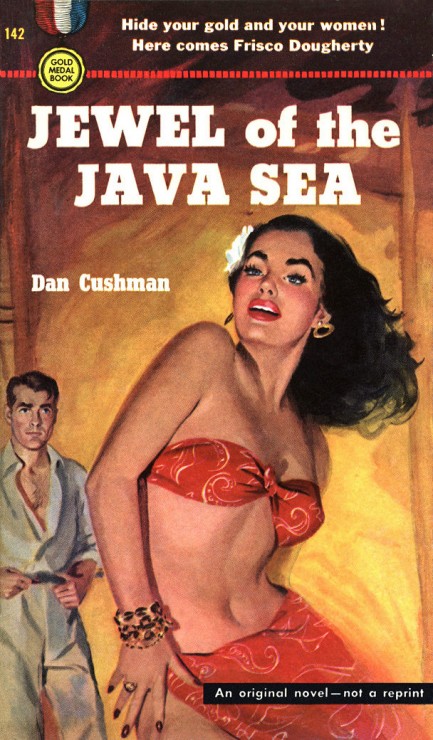
A glance at this Barye Phillips cover for Dan Cushman's 1951 novel Jewel of the Java Sea and you immediately expect it to be filled with lyrical old place names, with their romantic connotations for Westerners of a certain age—Siam, Burma, Celebes, Dutch East Indies, and broadly “the Orient,” names that have dissipated into history, though colonial memory continues to associate them with riches, adventure, and freedom. The name Java is still in use, and that's where Frisco Dougherty, a musician by training, but a fortune hunter and brawler in practice, has been knocking around for fifteen years attempting to make his fortune.
Dougherty has had little luck at this, which is why when he comes into possession of a yellow diamond said to be part of a priceless larger set, he goes into treasure hunter mode with sharp tongue, clenched fists, and hot lead. This jewel he's stumbled upon is supposedly one of five known collectively as the Taj Nipa, with those in turn married to a larger diamond called the Taj-i-nur. The whole kit and caboodle is presumed to reside in the vault of the Maharajah Sir Jagadipendra Bahadur, G.S., C.I., C.C.E.I., LMNOP. But that presumption could be wrong. Maybe the stones were liberated from their vault, though nobody has reported a theft.
Such capers are the core of these types of books, but there are also women. Anna, a Dutchwoman cast adrift in the islands, tells Dougherty she's searching for her missing father, an army major. She's important, but Dougherty is particularly intrigued by Locheng, an exotic dancer in the town of Pontianak, Borneo, and to his eye, a mix of all things good about Asia. He tells the reader she's, “Indo-Chinese, Malay, child of the melting pot, and [with] white blood, enough white blood make her vivid, give her fire.” Uh huh, Frisco loves him some Locheng, though he has a mighty brusque way of showing it:
He decided not to knock. He swung the door open. She sprang up to face him. She was naked. He took a deep breath and looked at her. She seized her sarong and swung it around her hips, tucked it tightly around her waist. Her breasts remained bare, after the fashion of native women.
“Why did you do that?” he asked. “Is it the Western influence that makes you think a body should be hidden? Let me see you as you were. You are so beautiful.”
The Western influence. We didn't notice him wandering around naked to demonstrate his liberation. But maybe that's his point—he's too corrupted to be free, but luckily—his luck, not hers—she isn't. At this point he's met Locheng exactly once before, and she called him a hodah orang—ugly man, according to the book, though not according to Google translate—and showed him the door. But he clearly thinks being cursed out was just a flirtatious prelude to his inevitable conquest of Locheng, and indeed, as these South Seas novels are usually male literary fantasies, that conquest will come soon enough.
Dougherty is interesting. He's impulsive and self-entitled; bigoted, though this appears to be more class than skin based; and sexist, to which we add no qualifiers considering he always wants women to parade around naked. But he's also sentimental and defends the underdog. We think he's an accurate depiction of a certain type of wayfaring American male endemic to the wilder reaches of the world. As former inhabitants of a couple of those reaches ourselves, we've met the type. Cue the Pulp Intl. girlfriends: “Met? You are the type.” Well, not really, though. We've always sought adventures, but our resemblance to Dougherty stops where he demands unearned respect, crosses lines of consent, and calls grown men, “boy.”
In the end, Jewel of the Java Sea is a South Asian thriller that sits neither at the top nor bottom of the genre. Frisco Dougherty might be worth having a beer with, but only until he says something offensive and refuses to apologize. What we'd prefer to hear from him are reflections about something other than how Western influence has ruined his chances to enjoy boobs al fresco. That may yet happen. Reading the book, we got the feeling he was supposed to become a franchise. A series never took root, but he did pop up in one sequel, 1960's The Half-Caste, also set in Asia. We already purchased it a little earlier today, because Cushman can write. What will be interesting is to see if Dougherty can grow.
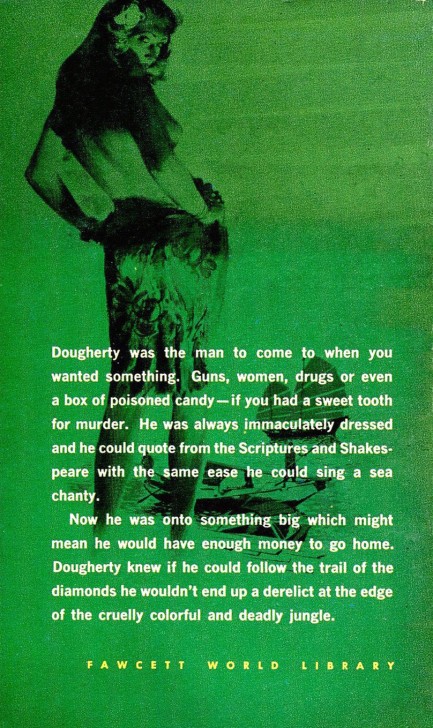
 Gardner and MacMurray juggle love and danger in wartime Malaysia. 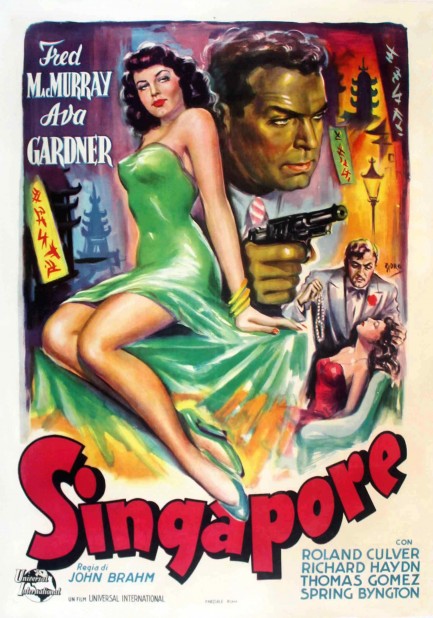
We talked about the 1947 war adventure Singapore in August. Here's a beautiful Italian poster for the film, on which co-star Ava Gardner takes front and center, with Fred MacMurray lurking in the background. There are several Italian promos. This one is by Zadro, who painted a number of other brilliant pieces, but about whom little is known today. We'll get back to him. And you can read more about the movie here.
 If at first you don't succeed, fly back to Malaysia and try again. 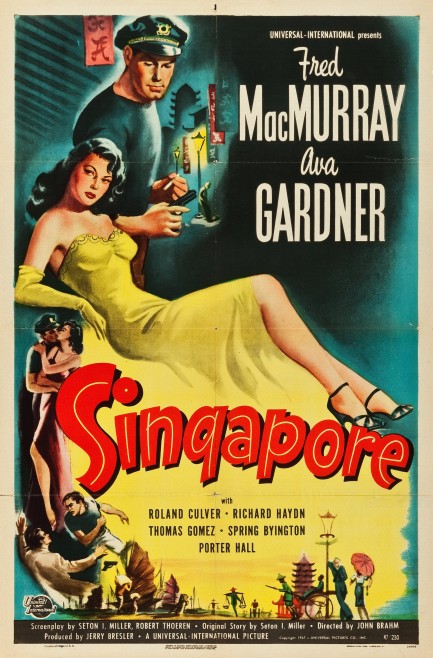
In the movies good girls always seem to fall for bad boys. In the World War II drama Singapore Ava Gardner is the former and Fred MacMurray is the latter, a smuggler of jewels. The two hook up in the titular locale, and when Gardner learns her new love is a crook, she accepts it with a rhetorical shrug. She asks merely if Fred is what the authorities suspect him to be, receives an affirmative answer, then asks if he can't sell jewels legally, receives the answer, “Yes, but at a quarter the price,” and that's it. She doesn't trouble her mind beyond that point, which we consider a major failing of Seton I. Miller's script.
It isn't the only failing. When it comes to areas of love and desire, the dripping melodrama of the dialogue puts MacMurray and Gardner in tough spots, and neither comes out unscathed. The good news is that in other areas Singapore fares better. The film weaves the tale of how MacMurray's plan to smuggle priceless pearls is cut short when the Japanese unexpectedly bomb the city. The love story, the smuggling plot, and the bombing are all told in reminiscence, bracketed front and rear by MacMurray's return five years after the tragedies and errors of his previous stint there. Now, with the city recovering from conflict, MacMurray tries to put together the puzzle pieces of the past.
We love old Hollywood's foreign fetish, its eagerness to set films in exotic locales. When it works well, as in Casablanca and its deft usage of Morocco, the result is magic; when it doesn't, as in, say, Miss Sadie Thompson and its setting of Pago Pago, the bells and whistles are a glaring reminder of missed opportunities. Singapore falls somewhere in the middle. We get to see a bit of Singapore when it was still part of Malaysia, which is interesting, but the most exotic sight to be seen is still Ava Gardner. For us, she was reason enough to take the trip. But just barely. Singapore premiered in the U.S. today in 1947.  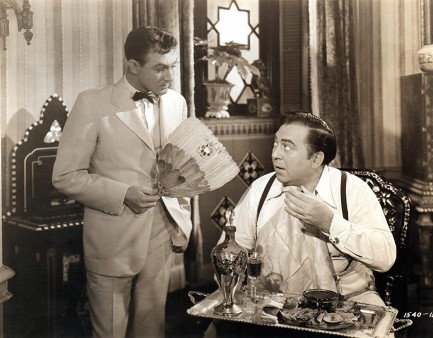 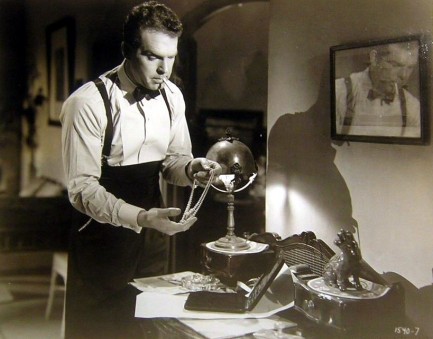 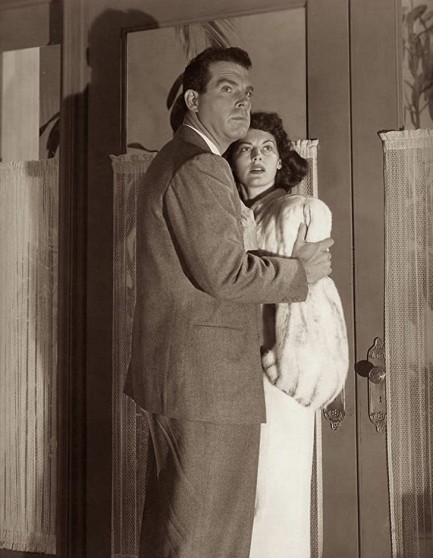 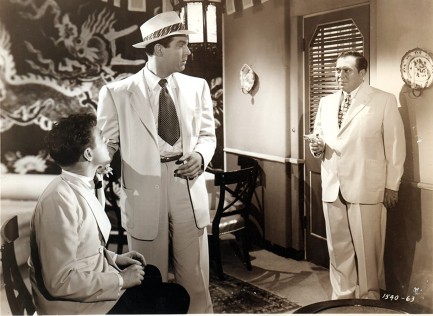  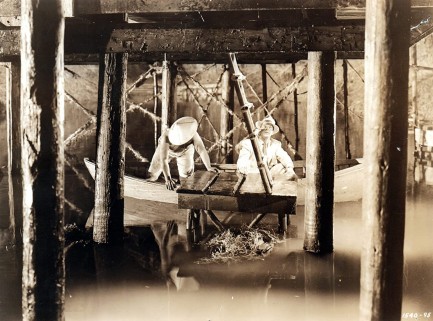 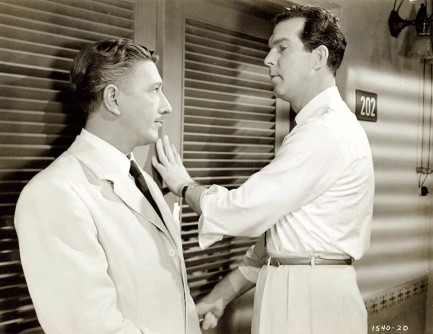 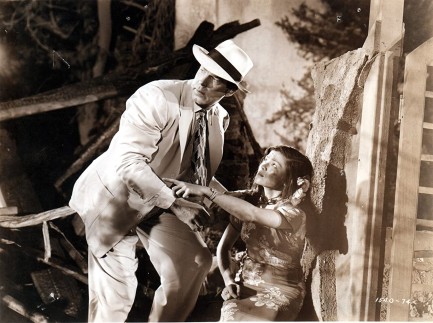 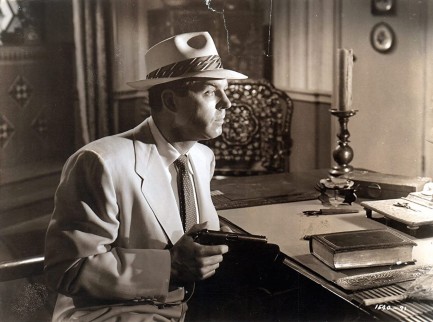 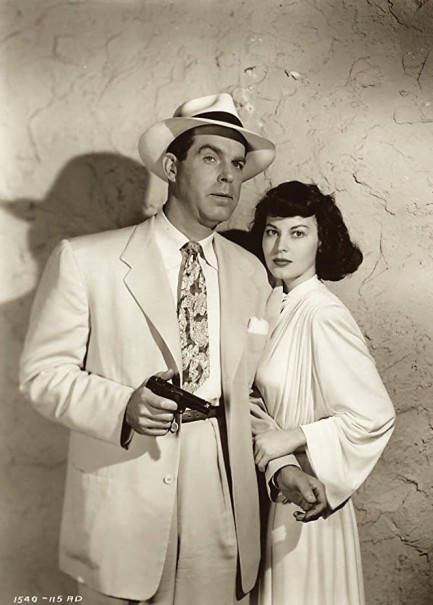
 You can also write in it, in theory at least. 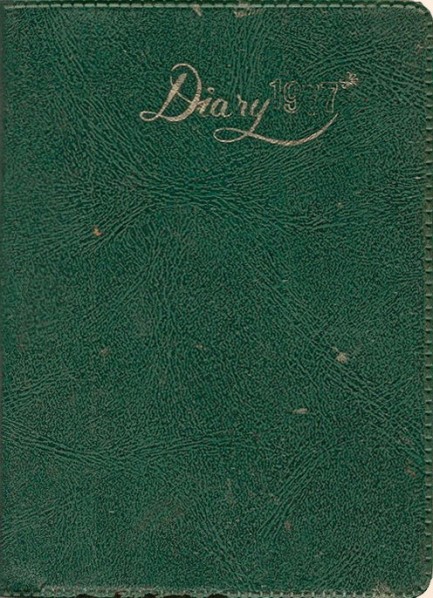
Nice diary, right? Well, don't worry about using it to set down your innermost thoughts—they're already in there, because this little baby is filled with pure smut. Way back we shared some scans from a couple of true oddities we acquired—porn from Malaysia disguised as mini diaries. The first one was stamped with the logo of Syarikat Great Wall Advertising, and the second was tucked inside a cover from the Tan Liat Seng Tea Company. When we posted the Tan Liat Seng diary we mentioned that we had a third example and promised to post it soon. Well, soon is relative, especially on Pulp Intl. But we're finally getting around to keeping that promise five years later. Above you see the cover of diary three, which is logoless save for the year—1977. Below are assorted scans from inside. Japanese actress Mari Tanaka appeared in the Tan Liat Seng diary, and she pops up in this one too. Some of the other women may be celebrities, but we can't place them. When we shared the first of these we thought they were all printed by the same company, but now we wonder if these were more like Tijuana bibles, printed by numerous companies and sold on the sly. We may never know the answer, but in any case these diaries are priceless treasures, at least to us.  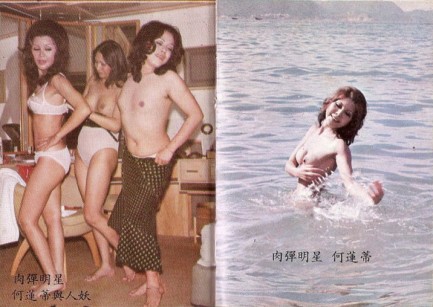 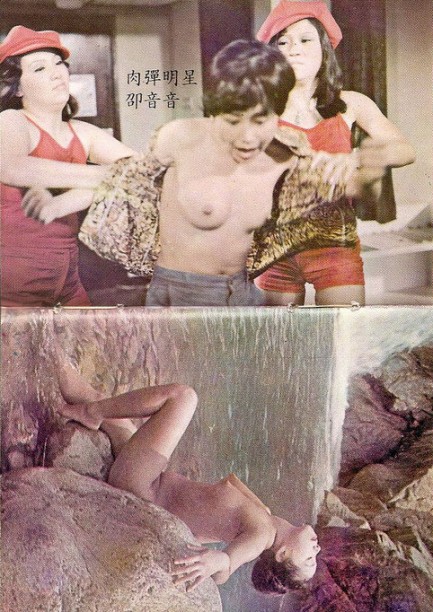   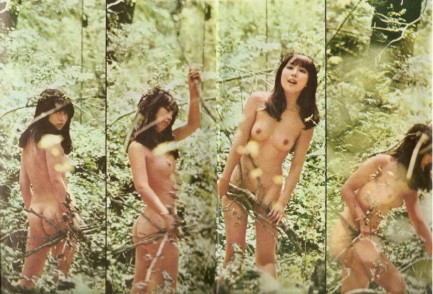 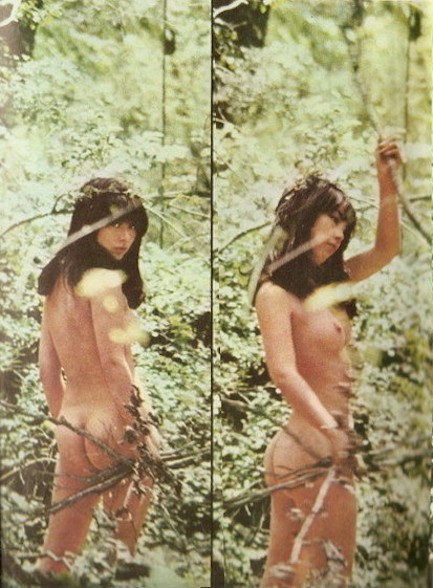  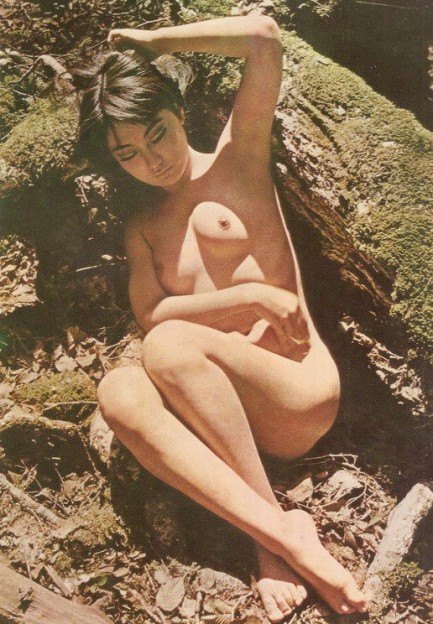 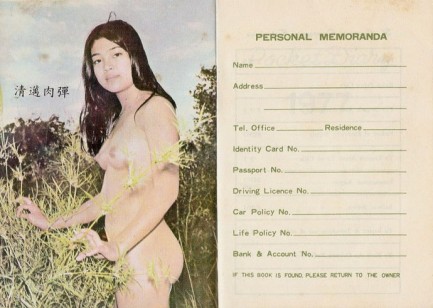
 Southeast Asia escape epic features murder, sex and everything between. 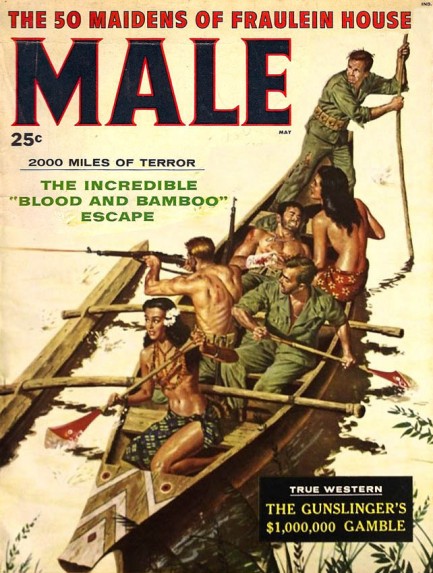
This issue of Male magazine published this month in 1958 features James Bama cover art illustrating Richard Farrington's story “The Incredible 'Blood and Bamboo' Escape,” which is the true tale of Dutchman Klaus van Tronk's flight from a Japanese internment camp in Malaysia during World War II. The story is a book-length special, and one of the more harrowing and interesting details involves one of the prisoners being tied spread-eagled on a bamboo mat elevated six inches above the ground. Beneath the mat were living bamboo shoots. As Farrington tells it (via van Tronk's account), “The shoots are tough, the tips as sharp as honed steel, and they can push through a plank floor [two inches thick]. They grow rapidly in the Pacific sun, about six inches on a good hot day. It had been a hot day.” When van Tronk's work detail came back that evening from a long grind of slave labor in the jungle the bound man already had bamboo shoots growing through his chest, and was still alive, screaming.
We did a verification check on this arcane torture and found that no cases confirmed to scholarly standards exist, but that it is well known in Asia, and experiments on substances approximating the density of human flesh have shown that it would work. As little as forty-eight hours would be needed to penetrate an entire body. Fascinating stuff, but what you really want to know in terms of veracity is whether scantily clad women helped the escapees paddle to freedom like in Bama's cover art, right? Well, this depiction is actually a completely accurate representation of what van Tronk described, or at least what biographer Farrington claims van Tronk described. The women were the daughters of a sympathetic Malay farmer, and indeed they wore virtually nothing, and were considered quite beautiful by the prisoners, save for the minor detail of having red teeth from the local tradition of chewing betel nuts.
The risk taken by these women was extraordinary. Other women who had helped van Tronk and his companions during their months-long odyssey were tortured and raped, and at one point a village was machine-gunned. Why would these Malays take up the foreigners' cause if the risks were so high? Van Tronk attributes it to a cultural requirement to help strangers in need, but we'd note that people have taken these sorts of risks everywhere, cultural norms or no. Often the suffering of others simply brings out the best in people. A historical check on Klaus van Tronk turned up nothing, though, so maybe the entire true story is a piece of fiction. If so, it's a very good one. We have some scans below with art by John Kuller, Joe Little, Al Rossi, Mort Kunstler, and Bruce Minney, and more issues of Male magazine at the keywords. 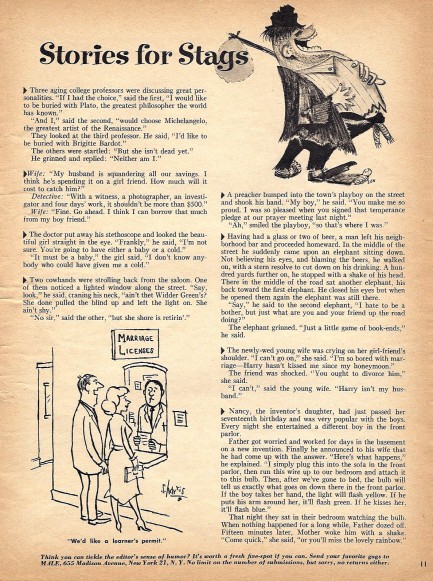 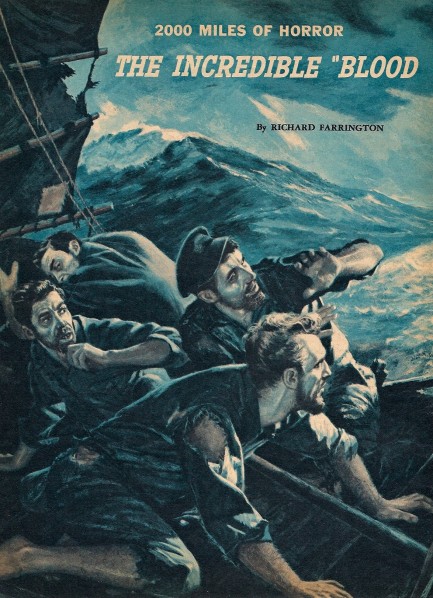 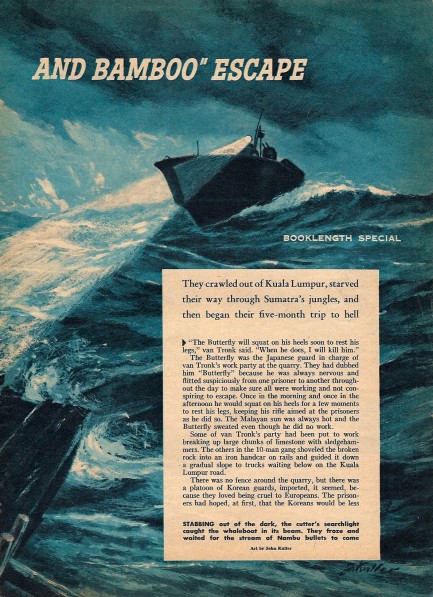 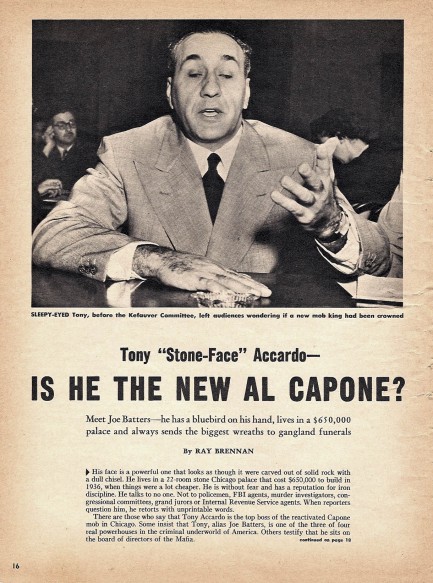 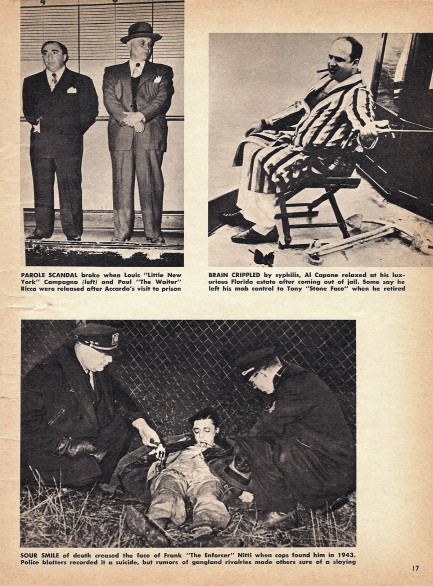  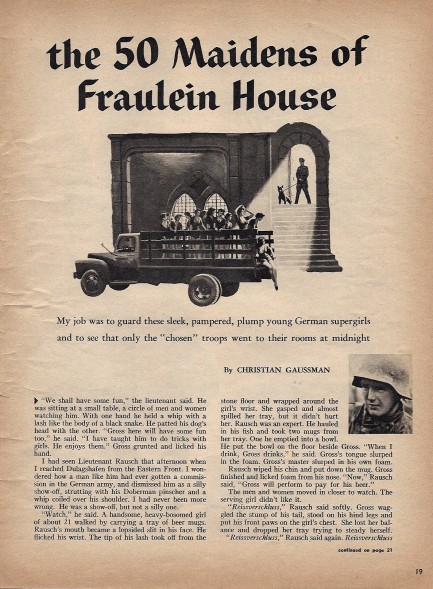 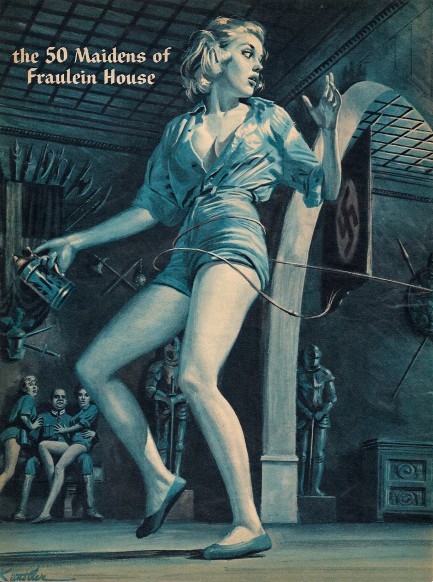 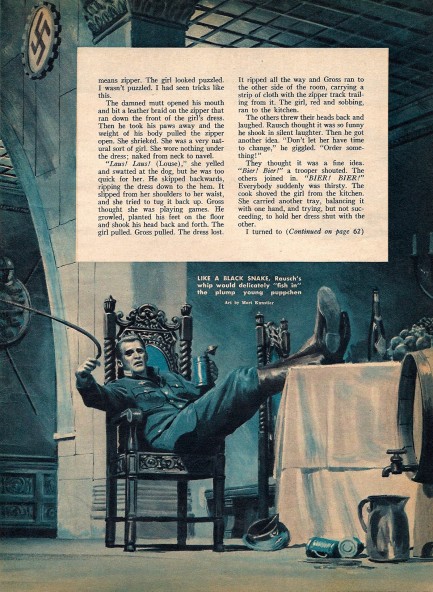 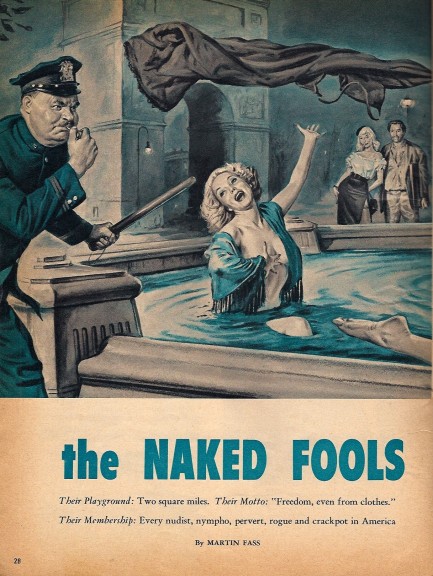 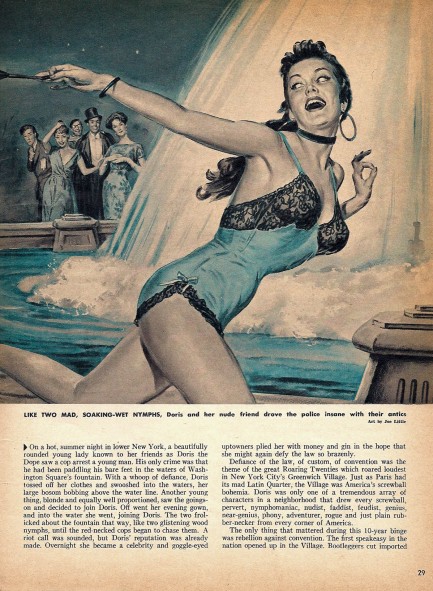 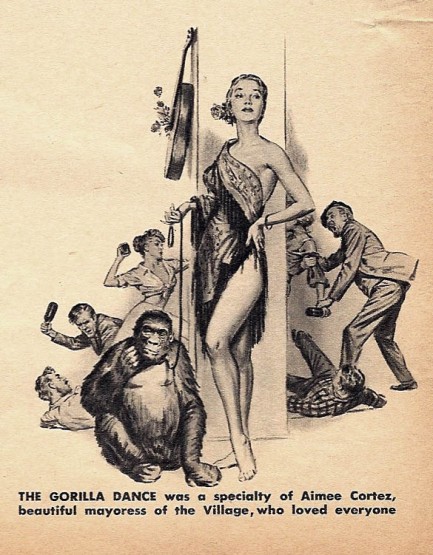 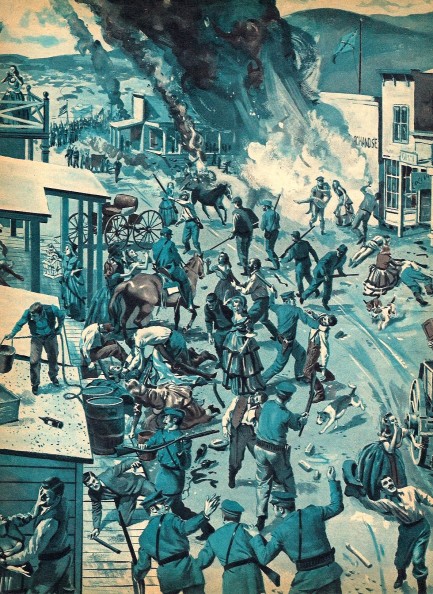 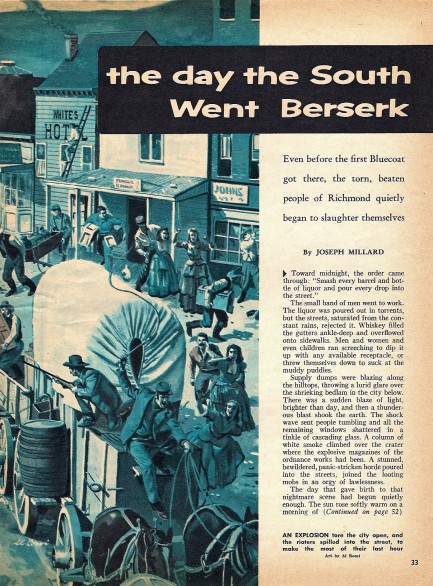 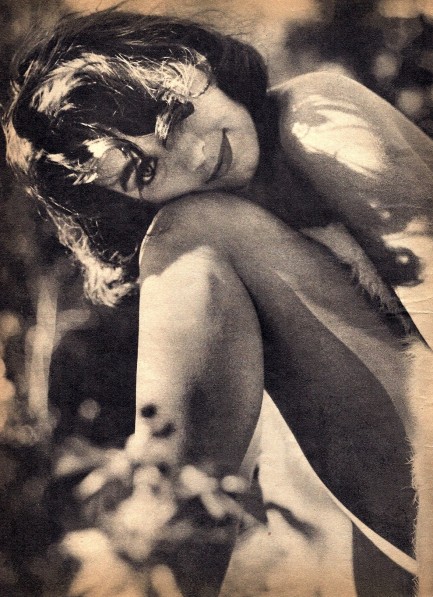 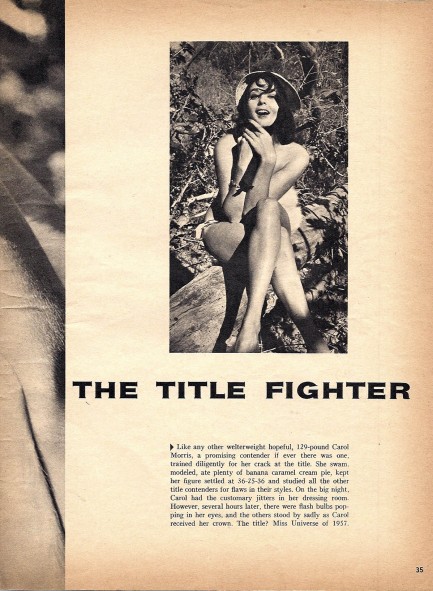 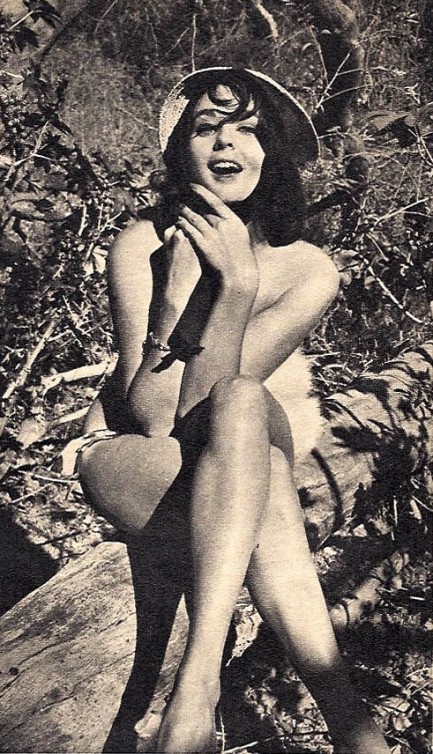 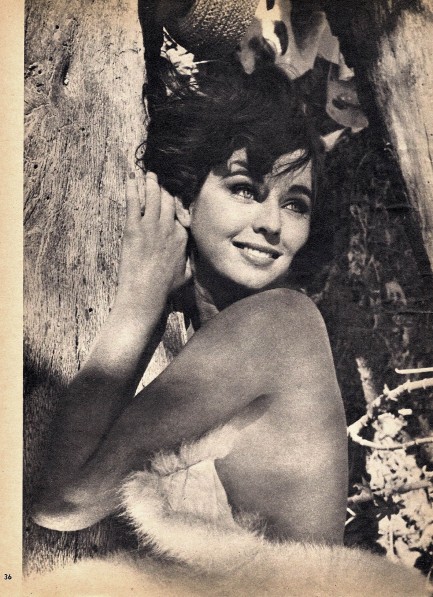 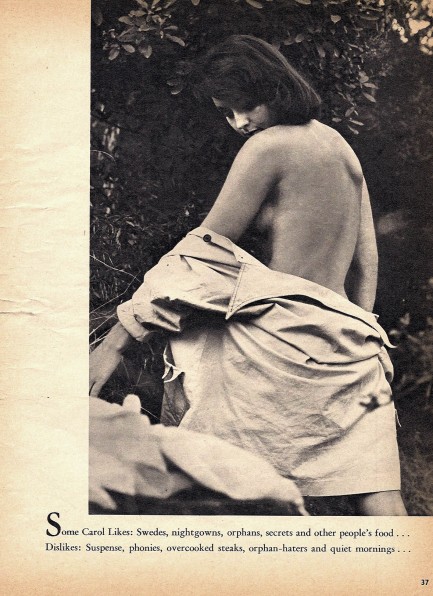 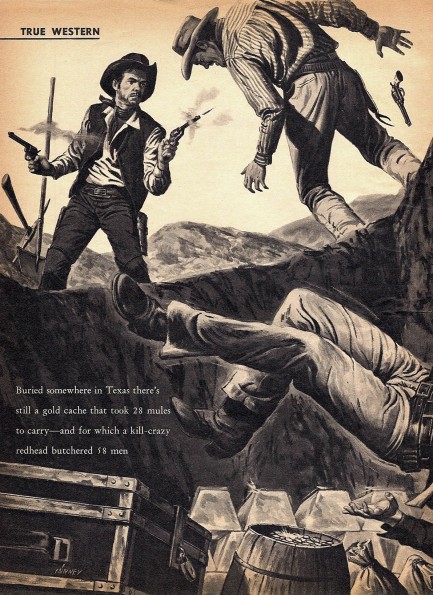 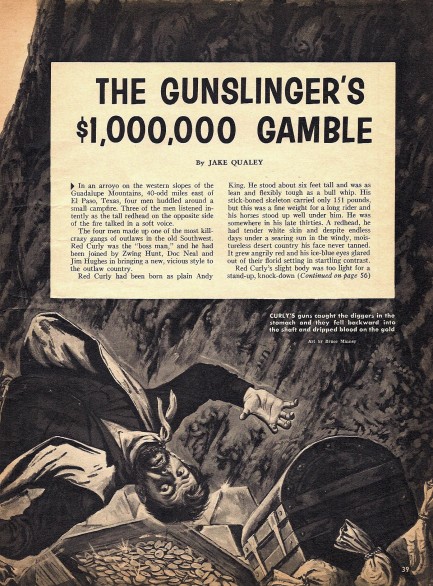 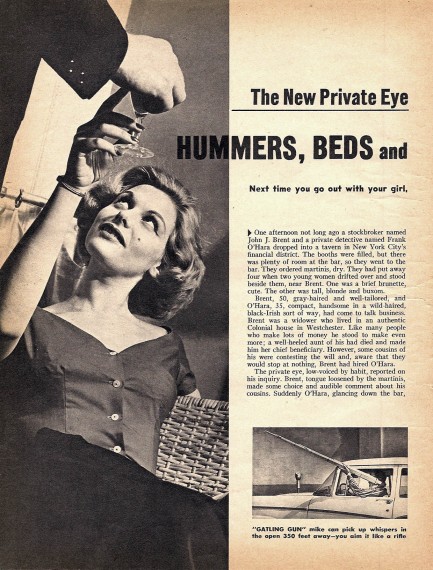 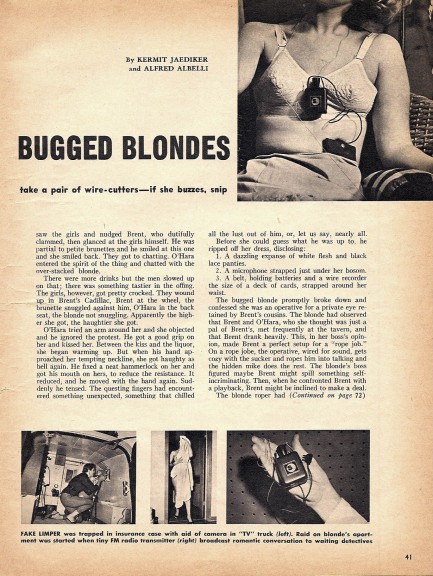 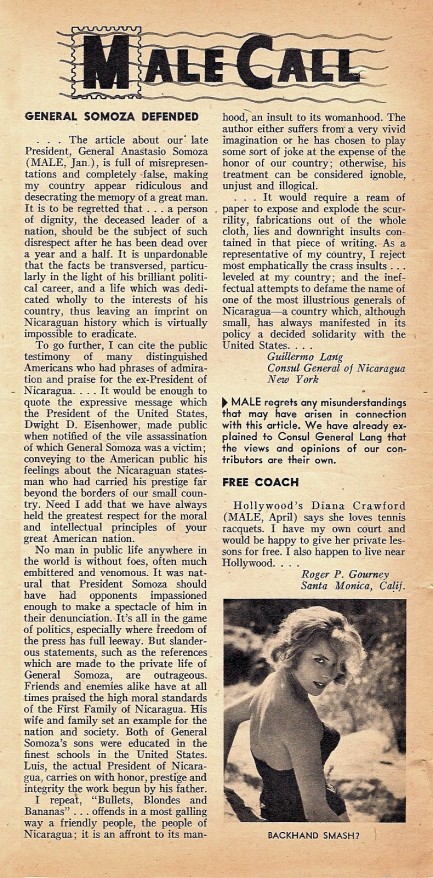
 Monroe may wobble but she won’t fall down. 
Marilyn Monroe shows up just about everywhere, and here she is yet again where we didn’t expect to see her—fronting a Malaysian film publication that appeared today in 1953. The magazine, called Filmalaya, is in English, which marks it as aimed at the British colonial community that occupied the upper stratum of society in Malaysia and Singapore. The cover photo is from a publicity series made when Monroe filmed the movie Niagara in Ontario, Canada in late 1952, and let’s just assume her perch is not as precarious as it seems and there’s a handy ledge or lawn behind her in case she goes heels up. But if she does, there are other stars in the magazine, such as Joan Collins, Betty Grable, Rhonda Fleming, Ava Gardner, and Nat King Cole. Filmalaya represents an interesting snapshot into colonial society, as in the article about Queen Elizabeth’s coronation in London, which describes the thrills and excitement in Malaysia during the event. Doubtless, the mood around the Commonwealth probably seemed festive when viewed from inside the colonial bubble, but we doubt actual Malaysians were particularly moved. Needless to say, this magazine is rare, but luckily items from Asia are often a bargain, so this cost a mere six U.S. dollars. While the inside is nothing special visually speaking, that doesn’t matter when the magazine has this great cover and is such an informative slice of history. We’ve uploaded a few of the best pages below. Enjoy. 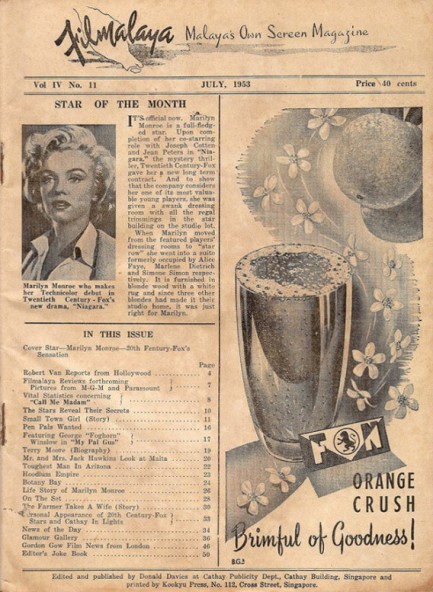 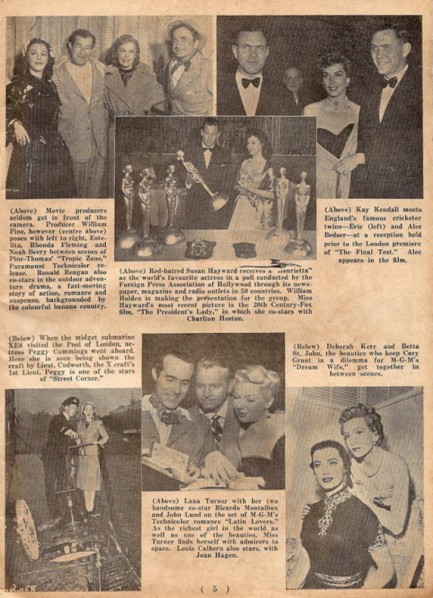 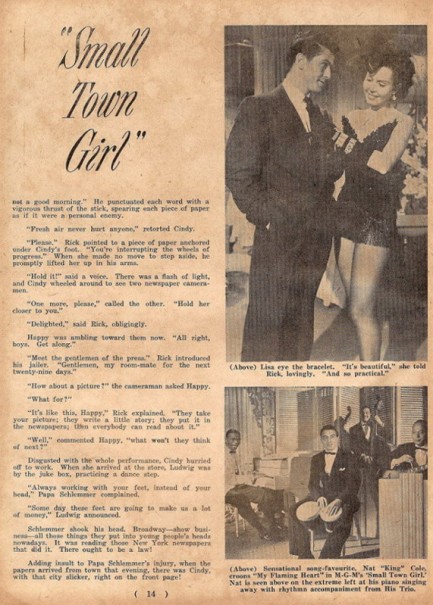 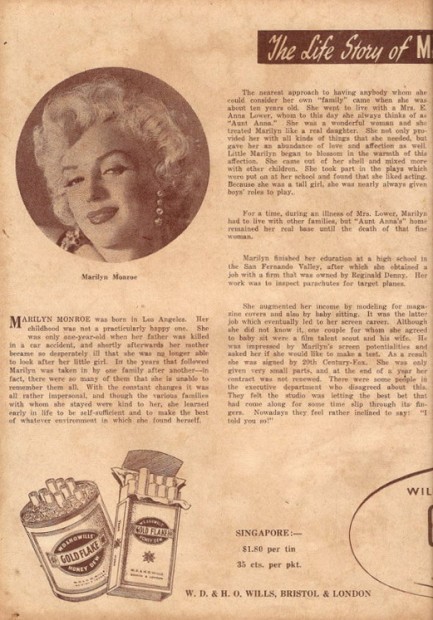 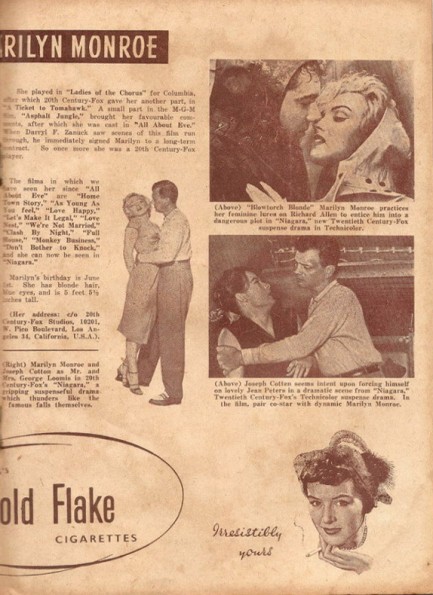 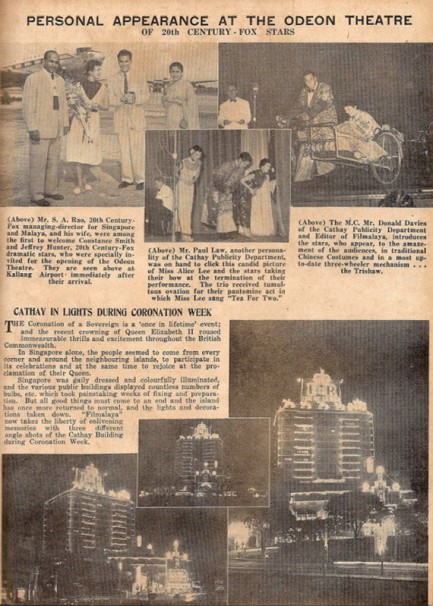 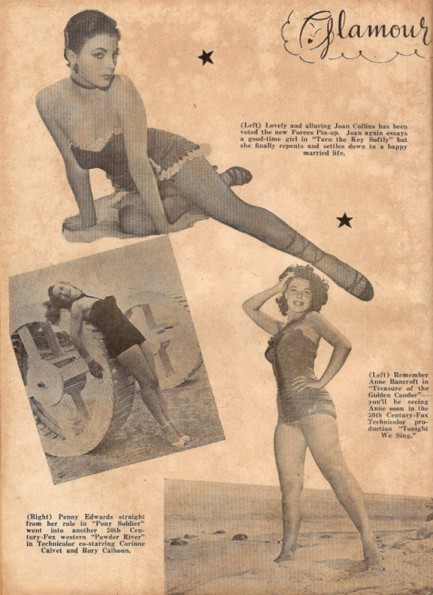 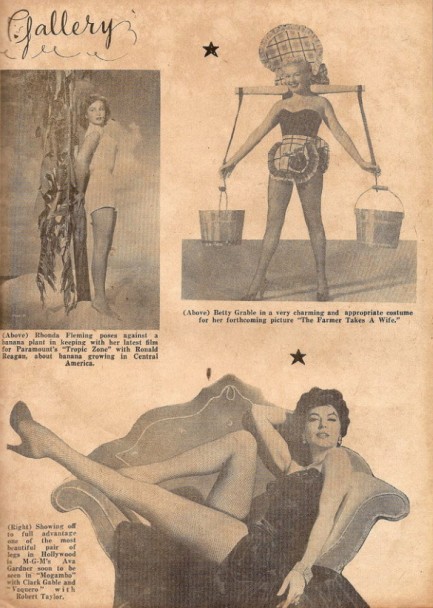

|
 |

The headlines that mattered yesteryear.
2003—Hope Dies
Film legend Bob Hope dies of pneumonia two months after celebrating his 100th birthday. 1945—Churchill Given the Sack
In spite of admiring Winston Churchill as a great wartime leader, Britons elect
Clement Attlee the nation's new prime minister in a sweeping victory for the Labour Party over the Conservatives. 1952—Evita Peron Dies
Eva Duarte de Peron, aka Evita, wife of the president of the Argentine Republic, dies from cancer at age 33. Evita had brought the working classes into a position of political power never witnessed before, but was hated by the nation's powerful military class. She is lain to rest in Milan, Italy in a secret grave under a nun's name, but is eventually returned to Argentina for reburial beside her husband in 1974. 1943—Mussolini Calls It Quits
Italian dictator Benito Mussolini steps down as head of the armed forces and the government. It soon becomes clear that Il Duce did not relinquish power voluntarily, but was forced to resign after former Fascist colleagues turned against him. He is later installed by Germany as leader of the Italian Social Republic in the north of the country, but is killed by partisans in 1945.
|

|
|

It's easy. We have an uploader that makes it a snap. Use it to submit your art, text, header, and subhead. Your post can be funny, serious, or anything in between, as long as it's vintage pulp. You'll get a byline and experience the fleeting pride of free authorship. We'll edit your post for typos, but the rest is up to you. Click here to give us your best shot.

|
|






